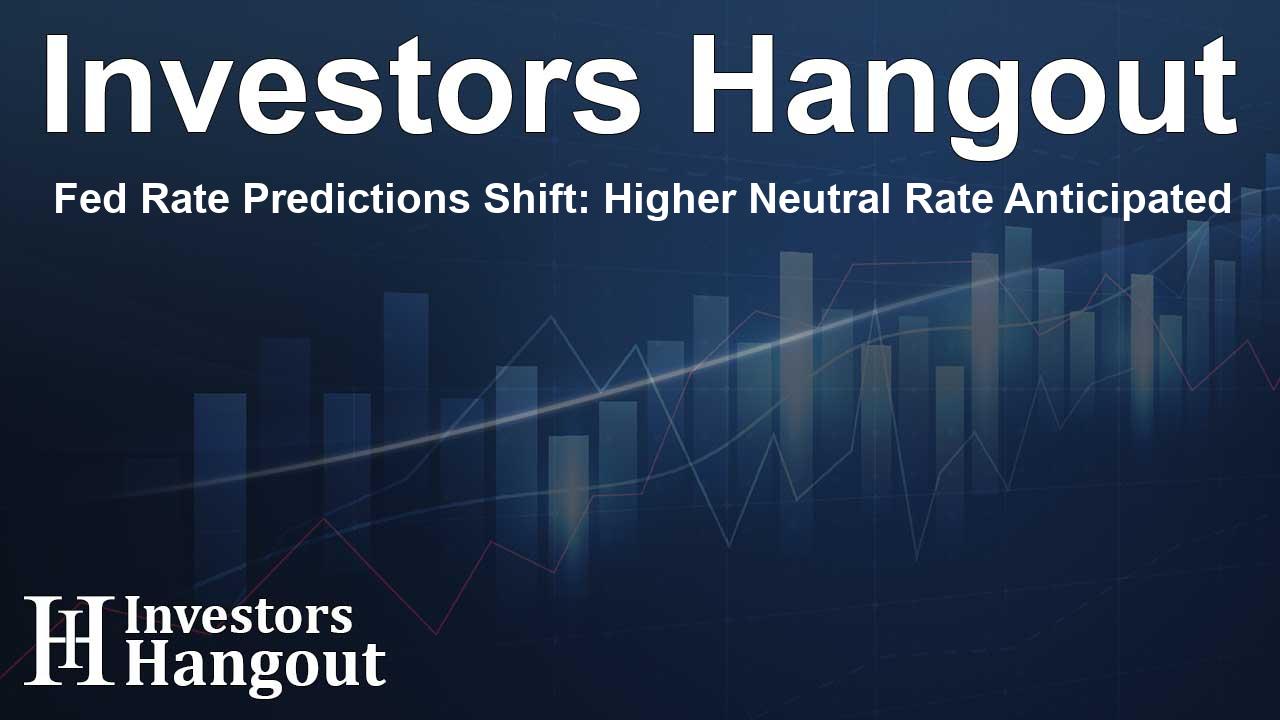Fed Rate Predictions Shift: Higher Neutral Rate Anticipated

Fed's Changing Approach to Interest Rates
The landscape of interest rates is evolving, and recent insights from economic strategists indicate that the Federal Reserve (Fed) may revise its approach regarding rate cuts in the upcoming year. This analysis highlights the potential for a higher neutral rate, which suggests a shallower trajectory for future rate reductions.
Predictions from MRB Partners
According to MRB Partners, a think tank specializing in macroeconomic research, we should expect an upward adjustment in the Fed's median forecast concerning the neutral policy rate. They warn that the Fed's capacity to implement cuts might be less than previously hinted at in official projections. The strategic insight provided by MRB is crucial for investors to understand the evolving monetary policy environment.
Recent Rate Adjustments by the Fed
In November, the Fed initiated a rate cut of 25 basis points, marking a continuation of their rate-cut strategy that began with a more substantial 50 basis point decrease in September. The projections made during the September meeting indicated an expectation for rates to dip to 3.4% by 2025, with a further reduction to 2.9% anticipated by 2026.
However, an influx of favorable economic indicators combined with ongoing inflation control challenges has led some Fed officials to reconsider their stance. The idea of a higher neutral rate is currently being entertained, with Dallas Fed President Lorie Logan recently mentioning that this rate could potentially increase to 4.5%. This shift in perspective signals a careful reevaluation of the economic landscape.
Understanding the Neutral Rate
The neutral rate is defined as the interest rate that supports the economy at full employment while keeping inflation stable. Logan noted that various models suggest a neutral real interest rate ranging from 0.74% to 2.60%. When factoring in an inflation target of 2%, this translates to a neutral funds rate between 2.74% and 4.60%.
Implications for Investors and Markets
This projected shift towards a higher neutral rate is expected to have significant repercussions for U.S. Treasury yields and the overall yield curve. The analysts at MRB foresee yields advancing, which may lead to a steepening of the yield curve. There is speculation that the 10-year Treasury yield might climb into the range of 5.25% to 5.5% as a result of these changes.
The Impact on Economic Growth
For the economy, this higher neutral rate implies a more cautious outlook. It would suggest that the Fed will take a measured approach to cutting rates further, as they balance supporting economic growth with the need to keep inflation in check. The strategists at MRB are advocating for a revised understanding of the neutral policy rate for the U.S., proposing it should be aligned more closely with or above the 4.5% mark in the context of a 3% inflation target and an expectation of 2% economic growth.
Conclusion
In summary, the evolving dialogue among Fed members regarding a higher neutral rate signals a potential shift in monetary policy that could have wide-ranging effects on financial markets and investor strategies. As this narrative unfolds, staying informed about these developments will be crucial for stakeholders in navigating the changing economic landscape.
Frequently Asked Questions
What is the neutral rate?
The neutral rate is the interest rate that neither stimulates nor restrains economic growth, maintaining full employment and stable inflation.
How might a higher neutral rate affect Treasury yields?
A higher neutral rate is expected to lead to increases in Treasury yields, potentially steepening the yield curve due to higher long-term rates.
Why are Fed officials considering a higher neutral rate?
Fed officials are considering a higher neutral rate in response to positive economic data and challenges in controlling inflation.
What did MRB Partners say about future rate cuts?
MRB Partners noted that the Fed is likely to implement fewer rate cuts than previously anticipated due to the possibility of a higher neutral rate.
Who is the Dallas Fed President?
The current Dallas Fed President is Lorie Logan, who has commented on the implications of a higher nominal neutral rate.
About The Author
Contact Riley Hayes privately here. Or send an email with ATTN: Riley Hayes as the subject to contact@investorshangout.com.
About Investors Hangout
Investors Hangout is a leading online stock forum for financial discussion and learning, offering a wide range of free tools and resources. It draws in traders of all levels, who exchange market knowledge, investigate trading tactics, and keep an eye on industry developments in real time. Featuring financial articles, stock message boards, quotes, charts, company profiles, and live news updates. Through cooperative learning and a wealth of informational resources, it helps users from novices creating their first portfolios to experts honing their techniques. Join Investors Hangout today: https://investorshangout.com/
The content of this article is based on factual, publicly available information and does not represent legal, financial, or investment advice. Investors Hangout does not offer financial advice, and the author is not a licensed financial advisor. Consult a qualified advisor before making any financial or investment decisions based on this article. This article should not be considered advice to purchase, sell, or hold any securities or other investments. If any of the material provided here is inaccurate, please contact us for corrections.
